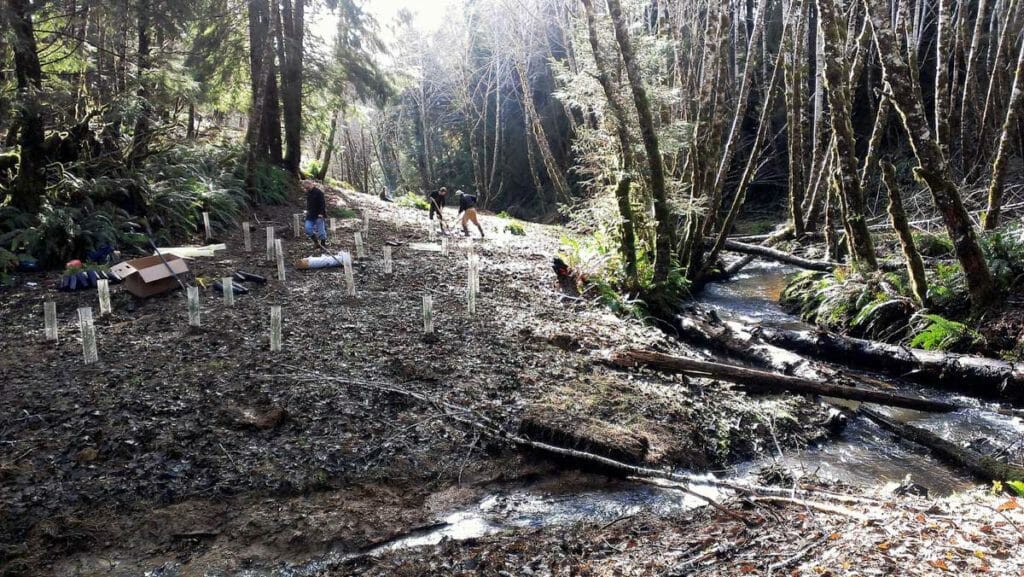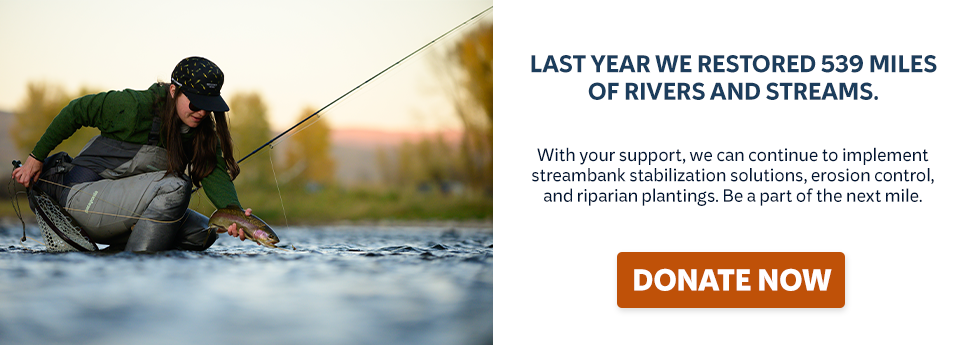
Mabel Creek is in the Upper Youngs River, above 90-foot-tall Young River Falls, so the native coastal cutthroat trout populations above the falls persist largely undisturbed by decades of hatchery production focused on targeted anadromous fisheries downstream in Youngs Bay near Astoria. While located on private timber land, the Upper Youngs River area is open to non-motorized access for anglers, providing nearly limitless dry fly action on aggressive native cutts during trout season.
To meet project goals, TU partnered with the landowner – a private timber company – the North Coast Watershed Association, and the US Fish and Wildlife Service, with support from the Orvis Culvert Fund, Oregon Watershed Enhancement Board, and the Trout & Salmon Foundation to decommission and remove .75 miles of logging road from the floodplain of Mabel Creek. We also permanently removed four barrier culverts and replaced a fifth with a fish-friendly one. Finally, we placed dozens of pieces of large wood within the floodplain and re-planted the entire project reach with native trees and plants.
Empirical victories for Mabel Creek coastal cutthroat will play out over time, as connectivity is restored, sediment loading is greatly reduced, habitat diversifies, and trout populations can express more of their natural life history traits again. Beyond that, the Mabel Creek Project in itself is a victory by bringing together a diverse set of non-traditional partners – timber and conservation; state, federal, NGO and private entities; local, state and national conservation groups, etc) to get some good, quality, lasting work done for rivers and fish.

